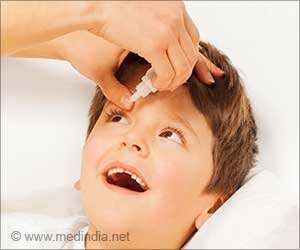Eye Drops can Prevent Nearsightedness

Once established, myopia is irreversible and can contribute to additional vision issues such as macular degeneration, retinal detachment, glaucoma, and cataracts. Since the 1970s, the prevalence of nearsightedness has nearly doubled, growing from 25% to nearly 42% of the US population. Experts believe that one of the causes of the surge is that children are spending more time indoors staring at devices.
Nearsightedness affects roughly one-third of all Americans. According to The Wall Street Journal, that number will rise to over 60% during the next 30 years as people spend more time indoors and looking at electronic devices. Myopia that is too severe can result in retinal detachment, glaucoma, and cataracts.
Advertisement
“Doctors claim that myopia arises when the eyeball grows longer and light entering the eye no longer reaches the retina at the back of the eye,” the newspaper stated. “That leads to the need for glasses or contact lenses, which work by directing light back onto the retina.”
Eye Drops Put to the Test
According to Nimesh Patel of Harvard Medical School, who was not involved in the study, atropine drops prevent people from seeing what is close to them. He stated that it is unclear how the drops prevent nearsightedness.
Researchers from Hong Kong evaluated 353 children aged 4 to 9. For two years, they gave one group a placebo, another group a modest dose of the drops, and a third group a greater dose every night. Those who received the greater dose had a decreased incidence of acquiring myopia and less eyeball lengthening.
Researchers believe that postponing the beginning of nearsightedness, which is common in children, may make it less severe with age.
Source: Medindia
Source link
#Eye #Drops #Prevent #Nearsightedness



